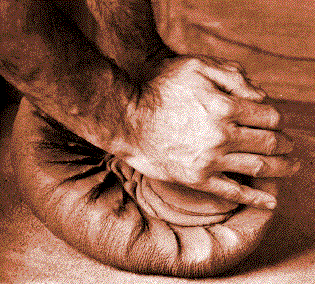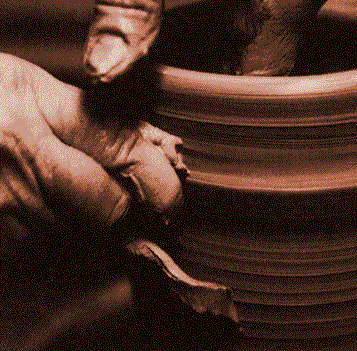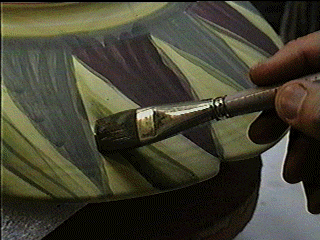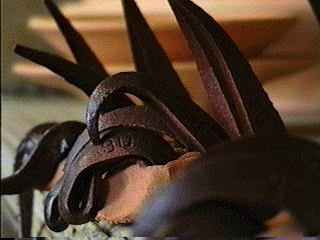OVERGLAZE FIRING
Sometimes, potters choose to do additional firings to achiever color
and surface effects not possible in the glaze firing. These effects include
lusters, china paints and decals. These overglaze techniques are fired at
extremely low temperature (1300 degrees F.) and because of that, brighter
colors and lusters are possible than can be achieved at 2350 degrees F.
These are, loosely speaking, very low fire glazes that are melted atop the
previously fired high temperature glaze. At this low temperature, the underlying
glaze does not even melt, instead the luster, china paint, or decal melt
onto the glaze and fuse, semi-permanently. This is the major disadvantage
of this technique. The overglazes are not as permanent as high temperature
glazes. Abrasion will erode this coating, and eventually, the overglaze
will be gone or muted by time. Still, unusual and exotic effects are possible,
and for this reason, potters are interested in this area. Some techniques,
like china painting, often involve multiple overglaze firings, layering
one color on top of another as complicated designs emerge |







